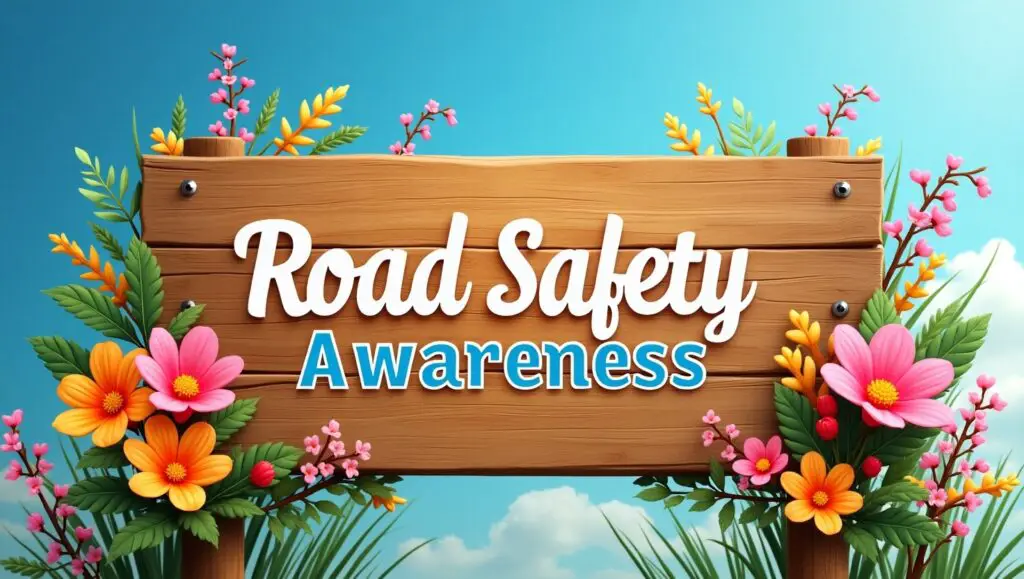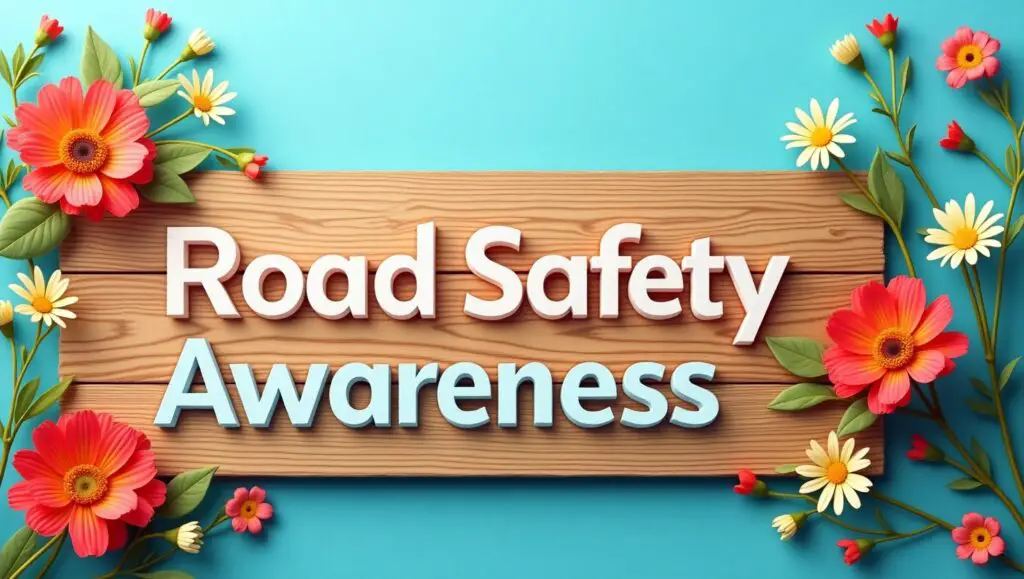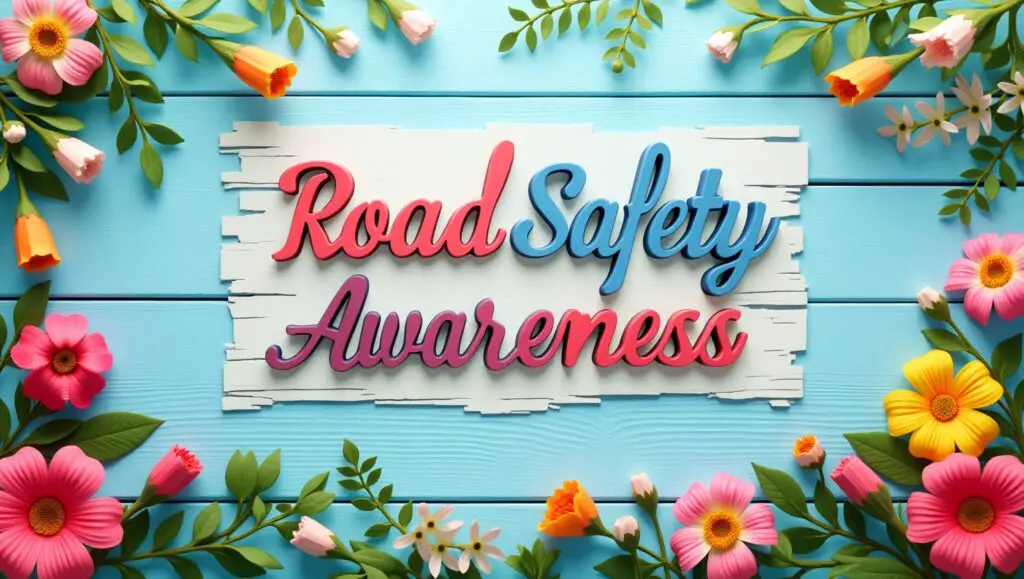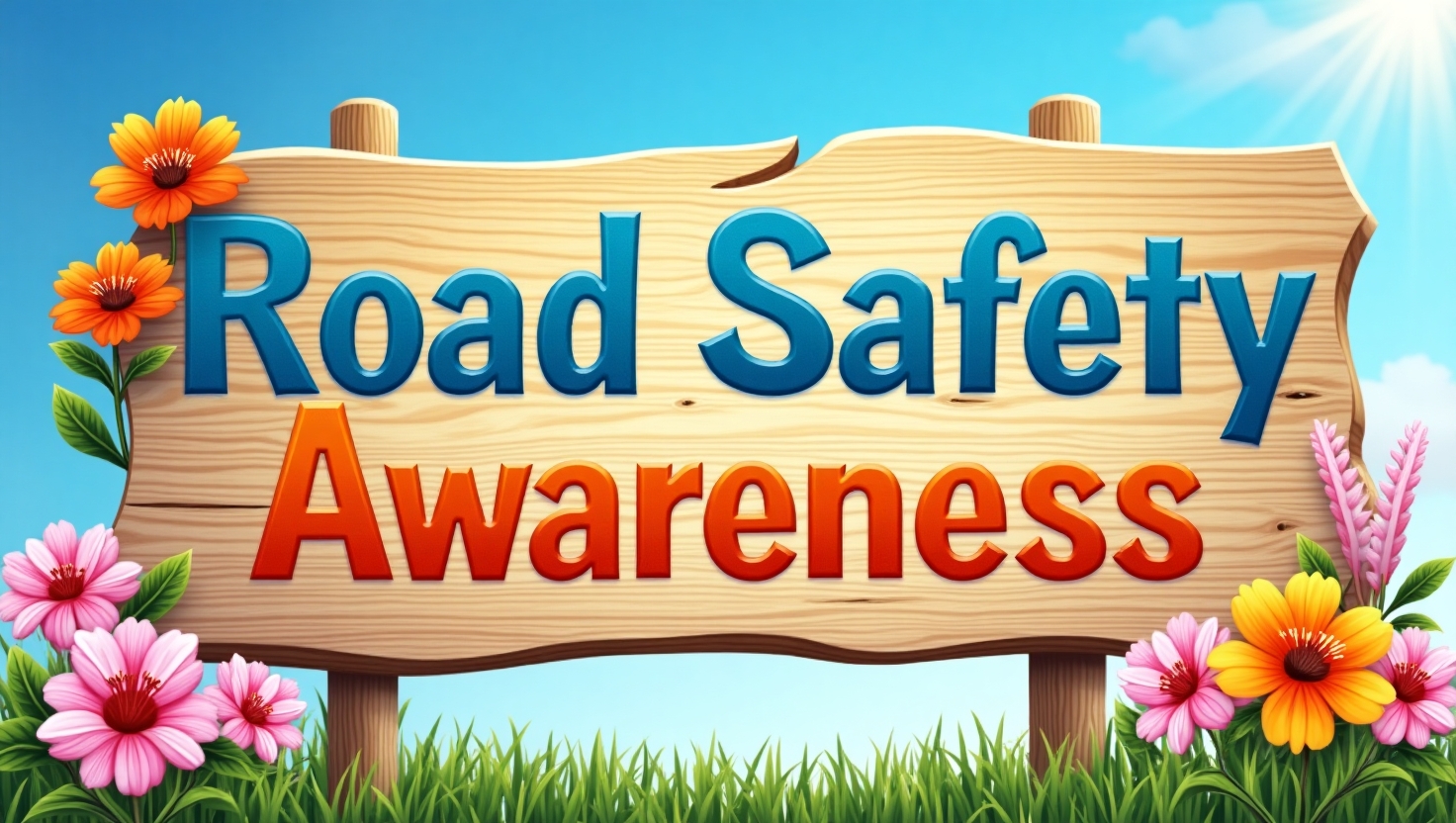Everyone who utilizes roads, whether as a driver, walker, cyclist, or passenger, is impacted by road safety awareness, which is more than just a campaign. Rising car numbers, rapid urbanization, and a rise in traffic accidents globally have made the need for road safety education more pressing than ever in 2025. Promoting road safety is not just the government’s responsibility but a shared duty of every individual.
This essay examines the most recent developments in road safety awareness, local obstacles, practical solutions, and community collaboration for safer roads.

The Critical Need for Traffic Safety
Over 1.3 million people worldwide lose their lives in traffic accidents each year, and millions more are hurt or disabled. The World Health Organization (WHO) reports that one of the main causes of death for individuals between the ages of 5 and 29 is traffic accidents. Poor road infrastructure, lax enforcement, and reckless behaviour are major contributors to the issue in emerging nations like Bangladesh, India, and Pakistan.
Road congestion and accident risks have increased in 2025 due to an increase in vehicle ownership, especially of motorcycles and ride-sharing cars. This emphasizes how urgently road safety awareness needs to be increased by technology-based solutions, stringent legislation, and education.
The Main Reasons for Traffic Accidents
Developing a successful road safety strategy requires an understanding of the underlying causes of accidents. Among the most frequent reasons are:
Speeding: Exceeding the speed limit shortens reaction times and makes collisions more severe.
Distracted Driving: Using a phone, eating, or even switching music while operating a motor vehicle causes one to lose concentration.
Drunk Driving: Alcohol impairs judgment and coordination, making it one of the worst causes of accidents.
Ignoring traffic laws: Not yielding the right of way, running red lights, and making unlawful U-turns are serious infractions.
Poor Vehicle Maintenance: Avoidable accidents can result from worn-out brakes, damaged tires, or malfunctioning headlights.
Pedestrian Negligence: Careless pedestrian crossings and signal disregard are major causes of accidents.

Campaigns for Road Safety and Awareness Initiatives
Many nations are educating the public through road safety programs in 2025. Road signs, community activities, school programs, and mass media ads are frequently used in these initiatives.
The National Highway and Motorway Police (NHMP) in Pakistan, for example, often organizes awareness campaigns with a focus on teenage drivers and motorcycle riders. With training sessions, traffic simulations, and awareness films, the Ministry of Road Transport and Highways (MoRTH) in India hosts Road Safety Month annually.
Additionally, social media channels are crucial in reaching a younger and wider audience with messages on road safety.
The Value of Teaching Road Safety in Schools
A culture of responsible driving behaviour can be established by introducing road safety at a young age. Road safety education is now a required subject in many nations. Students gain knowledge of:
Using pedestrian signals and zebra crossings appropriately
Putting on seat belts and helmets
Traffic lights and road signage
Being safe when driving or riding in a bus
By making youngsters informed, they not only protect themselves but also influence their families with safe habits.
Using Technology to Make Roads Safer
By 2025, cutting-edge technological advancements are making highways safer:
In cities, speed and red-light cameras are lowering infractions.
Commercial trucks equipped with GPS tracking technology keep an eye on driver behaviour.
Bicyclists are increasingly wearing smart helmets with sensors and SOS alerts.
Automatic braking systems (ABS) and dashcams increase driver accountability.
Real-time alerts about accidents, road closures, and hazards are now provided to drivers via mobile apps.
AI-driven traffic control systems are being utilized to manage traffic and lower accident rates in nations like Singapore and the United Arab Emirates.
Role of Laws and Enforcement
Strict laws and timely enforcement play a vital role in promoting road safety. Traffic authorities worldwide are putting into practice the following in 2025:
Tougher punishments for infractions including speeding and drunk driving
Systems of license points to monitor repeat offenders

Seatbelt and helmet requirements
Certifications of vehicle fitness to guarantee roadworthy conditions
The e-Challan system, which was introduced by Pakistani traffic authority, records infractions online and sends fines to the registered address. In places like Lahore and Islamabad, this has greatly increased compliance.
Road Safety and Community Involvement Volunteers: Communities can promote long-lasting improvements in traffic safety. Authorities are collaborating with volunteers, non-governmental organizations, and local leaders to:
Hold workshops on road safety in colleges and schools.
Distribute protective gear, such as reflectors and helmets.
Help with traffic control during events or peak hours
Report dangerous roads or careless driving.
A grassroots movement for safer travel is being built by initiatives like Drive Safe Pakistan and Safe Roads for Youth, which are spearheading these community initiatives.
In conclusion, a shared responsibility
In 2025, being aware of traffic laws is only one aspect of road safety awareness; another is fostering a culture that prioritizes safety over convenience and speed. To prevent accidents and preserve lives, governments, schools, drivers, and pedestrians must collaborate.
Your behaviour matters whether you’re driving a car or using a sidewalk. Put on your seatbelt, wear your helmet, abide by traffic laws, and maintain your attention. Little choices can have a significant impact.
Let’s work together to make the roadways safer for everybody.
traffic law enforcement, e-challan system, school road safety programs, road safety education in Pakistan, road safety awareness 2025, road safety campaigns, causes of traffic accidents, knowledge of traffic regulations, safe driving advice, helmet and seatbelt use,



